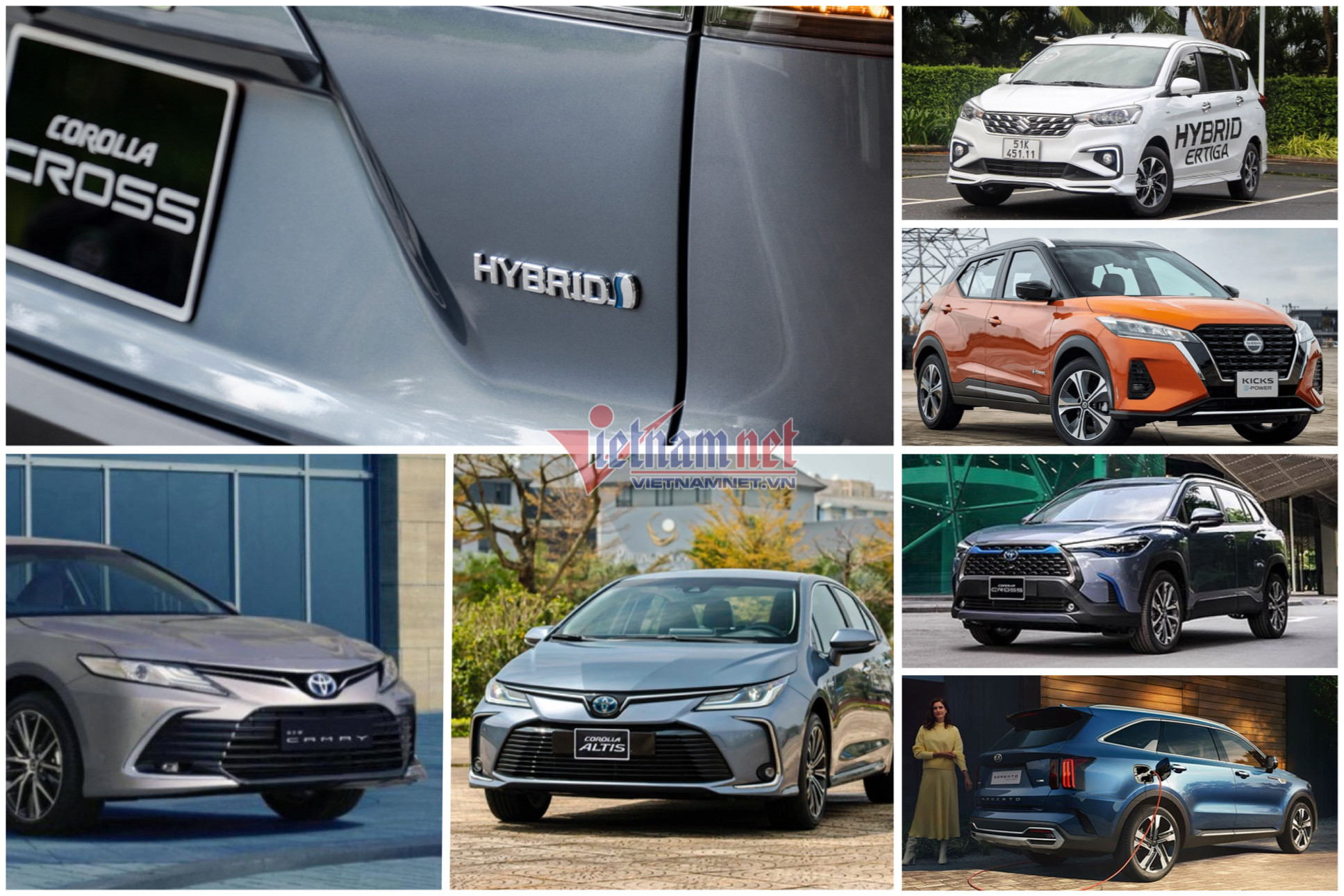
Hybrids appeared in Vietnam years ago, but it was not until 2022 that the market became bustling with a high number of hybrids available.
In March 2022, the next-generation Toyota Corolla Altis hit the market, including the hybrid version. Together with Corolla Cross and Camry, the trio of the Japanese manufacturer caught special attention from the public.
In late September 2022, Suzuki Ertiga Hybrid was introduced to the MPV (multi-purpose vehicle) market, which emphasizes pragmatism and thrift.
In November 2022, B-SUV Nissan Kicks was launched with the original e-Power engine. The model has similar operation capability as EVs, while users just need to inject gasoline instead of plugging in the charger.
In December 2022, local manufacturer THACO launched KIA Sorento HEV (hybrid) and Sorento PHEV (plug-in hybrid). The latter was the first commercial plug-in hybrid model available in Vietnam.
Luxury cars using hybrid engines also turned up in Vietnam in 2022, such as Volvo XC60 Recharge and Audi A8L.
Several years ago, hybrids were unfamiliar to Vietnamese. The first hybrids available in Vietnam were luxury models of Lexus, Mercedes Benz, Audi, Volvo and Land Rover which were provided in very small quantities.
With the launch of many hybrid models in 2022, Vietnamese customers have more choices for hybrids, from low-cost to high-end.
Analysts say that more hybrids will be introduced in 2023. THACO, for example, plans to introduce a hybrid model for KIA Sportage this year, while Toyota will continue selling Innova, one of the best sellers, including the hybrid version.
Hyundai Thanh Cong joint venture has revealed a plan to assemble new models, including the hybrid version of SUV Hyundai Santa Fe, while the distributor for Nissan plans to bring an X-Trail hybrid to Vietnam by mid-year.
Changing habits
The appearance of nearly 10 hybrid models and EVs (electric vehicles) is changing Vietnamese people’s habit of using ‘green vehicles’. This is in line with the government roadmap on green energy and reducing emissions stipulated in Decision 876/QD-TTg dated July 22, 2022.
Under the plan, from now to 2030 would be the time for promoting production, assembly and import of EVs.
In 2031-2040, Vietnam will step by step restrict and then stop the production, assembly and import of cars and motorbikes using fossil fuel.
By 2050, 100 percent of road vehicles will shift to use green energy.
Dam Hoang Phuc from the Hanoi University of Science and Technology said amid current challenges caused by air pollution and high fuel prices, hybrid vehicles are a good solution which saves fuel and minimizes emissions, a solution for the Vietnamese market.
“With obvious advantages such as economical and smooth operation, and high reproducibility, hybrids will be a reasonable ‘stepping stone’ for Vietnam at this moment, before shifting to using pure EVs,” Phuc said.
He noted that as the charging station network remains incomplete, hybrid users, especially HEV, will not have to worry about car charging.
Using hybrids, drivers can enjoy all the advantages of new technologies and the driving sensations of EV cars, including good acceleration, stability and energy regeneration when braking.
According to the Vietnam Automobile Manufacturers’ Association (VAMA), in the short and medium term, it will be easy to popularize HEV and PHEV, which will improve air quality, reduce CO2 emissions and save fuel, because the products do not require a large electricity charging station network.
Meanwhile, in the long term, when the charging station network develops, the required charging time is shortened and the types of renewable energy expand, BEV (Battery electric vehicle) will be more popular, which is also the target for Vietnam by 2050.
People have shown their mounting attention to the motor vehicles friendly to the environment, including hybrids, especially when the fuel supply is unstable.
The latest report by Frost & Sullivan showed that though the market declined in 2021 because of Covid-19, the number of EVs sold still accounted for 11.7 percent of total sales. The figure is predicted to rise to 26.7 percent by 2025, of which HEV would account for 16.2 percent. By 2030, the number of new EVs would account for 59 percent.
VAMA believes Vietnam would follow the trend of using green vehicles in the world and that is the reason for manufacturers to step up the research and development (R&D) of hybrids in 5-10 years at least.
Y Nhuy